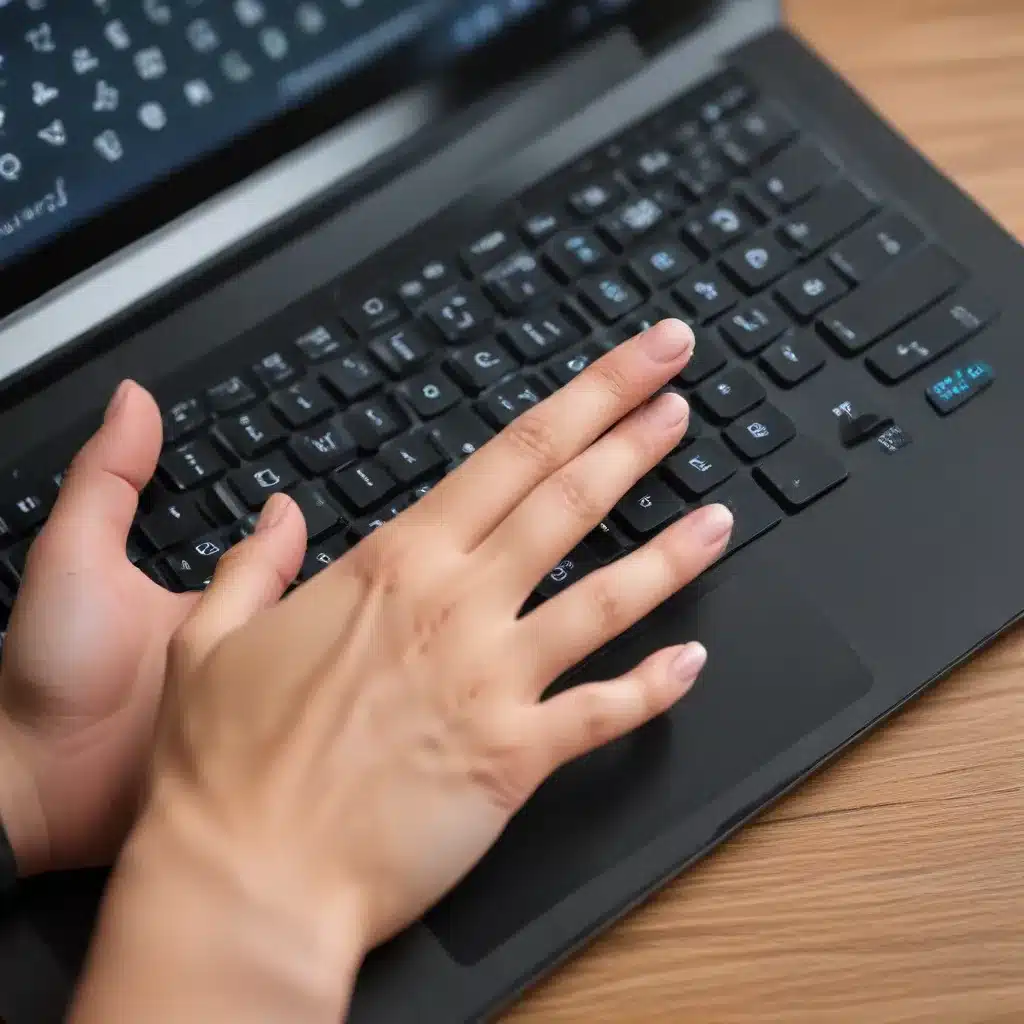
As a seasoned IT professional, I’ve observed that one of the most overlooked areas of laptop optimization is the customization of touchpad gestures. This powerful feature often goes underutilized, leaving users struggling with inefficient cursor control and navigation. In this comprehensive guide, we’ll dive into the world of touchpad gestures, exploring how you can personalize them to enhance your productivity and overall computing experience.
Understanding Touchpad Gestures
Touchpad gestures, also known as trackpad gestures, are intuitive multi-finger movements that allow you to perform a variety of actions on your laptop. From basic cursor control to advanced navigation and productivity features, these gestures can significantly streamline your workflow.
Some of the most common touchpad gestures include:
- Tap to Click: A simple tap on the touchpad to select an item or perform a left-click.
- Scroll: Placing two fingers on the touchpad and sliding them vertically or horizontally to scroll through content.
- Zoom: Placing two fingers on the touchpad and pinching or stretching them to zoom in or out.
- Right-click: Tapping the touchpad with two fingers or pressing on the lower-right corner to access right-click functions.
- Swipe Gestures: Using three or four fingers to swipe up, down, left, or right to perform actions like switching between open windows, showing the desktop, or navigating desktops.
While these basic gestures are widely available, the true power of touchpad customization lies in the ability to personalize these actions to suit your individual needs and preferences.
Customizing Touchpad Gestures
One of the key advantages of touchpad customization is the ability to tailor the gestures to your specific workflow. Whether you’re a power user, a designer, or someone who simply wants to streamline their daily tasks, the right gesture setup can make a significant difference in your overall computing experience.
Windows 10 and 11 Touchpad Customization
On Windows 10 and 11, you can access the touchpad customization settings by following these steps:
- Open the Start menu and search for “Touchpad settings.”
- In the Touchpad settings window, you’ll find options to customize your three-finger and four-finger gestures.
- Experiment with the available options, such as assigning different actions to the swipe gestures, to find the perfect configuration for your needs.
For example, you could set a four-finger swipe left or right to switch between open desktops, or a three-finger swipe up to show all open windows. These customizations can greatly enhance your productivity by streamlining common tasks.
Synaptics Touchpad Driver Customization
If your laptop is equipped with a Synaptics touchpad, you can take your customization even further by downloading the Synaptics Pointing Device Driver. This free software provides advanced settings and features to fine-tune your touchpad experience.
Some of the key features of the Synaptics Pointing Device Driver include:
- Sensitivity and Speed Adjustments: Fine-tune the cursor speed and sensitivity to match your personal preferences.
- Corner Action Customization: Assign specific actions to each of the four corners of the touchpad, such as launching frequently used applications or toggling system settings.
- Gesture Customization: Personalize the behavior of multi-finger gestures, allowing you to tailor them to your workflow.
- Virtual Scrolling: Configure the touchpad to function as a virtual mouse wheel or scrollbar for seamless navigation.
By leveraging the Synaptics Pointing Device Driver, you can truly unlock the full potential of your laptop’s touchpad and create a tailored user experience that aligns with your specific needs.
Enhancing Productivity with Touchpad Gestures
Once you’ve configured your touchpad gestures to your liking, you’ll be able to unlock a new level of productivity and efficiency. Here are some ways you can leverage your customized touchpad to streamline your daily tasks:
- Faster Window Management: Use swipe gestures to quickly switch between open windows, minimize or maximize applications, and manage your desktop environment.
- Seamless Scrolling and Zooming: Optimize the scroll and zoom gestures to navigate documents, web pages, and design software with ease.
- Streamlined Application Launching: Assign frequently used applications to specific corner actions or gestures, allowing you to launch them with a single touch.
- Improved Cursor Precision: Fine-tune the cursor speed and sensitivity to achieve the level of control you need for tasks such as photo editing, CAD work, or detailed data manipulation.
- Reduced Hand Fatigue: By customizing your touchpad gestures, you can minimize the need for constant mouse usage, which can lead to hand and wrist strain over extended periods.
Remember, the key to unlocking the full potential of your laptop’s touchpad lies in experimenting with the available settings and finding the configuration that best suits your unique workflow. Don’t be afraid to try different combinations and refine your gestures until you achieve the perfect balance of efficiency and comfort.
Conclusion
In the ever-evolving world of laptop technology, the humble touchpad often goes overlooked, despite its vast potential for improving productivity and navigation. By taking the time to customize your touchpad gestures, you can unlock a new level of control and efficiency, streamlining your daily computing tasks and enhancing your overall user experience.
Whether you’re a Windows 10 or 11 user, or you have a Synaptics-equipped laptop, the tools and resources are available to help you tailor your touchpad to perfection. Embrace the power of touchpad customization and watch as your laptop becomes an even more indispensable tool in your digital arsenal.
For more IT insights and practical tips, be sure to visit IT Fix – your go-to source for all things technology, computer repair, and IT solutions.












